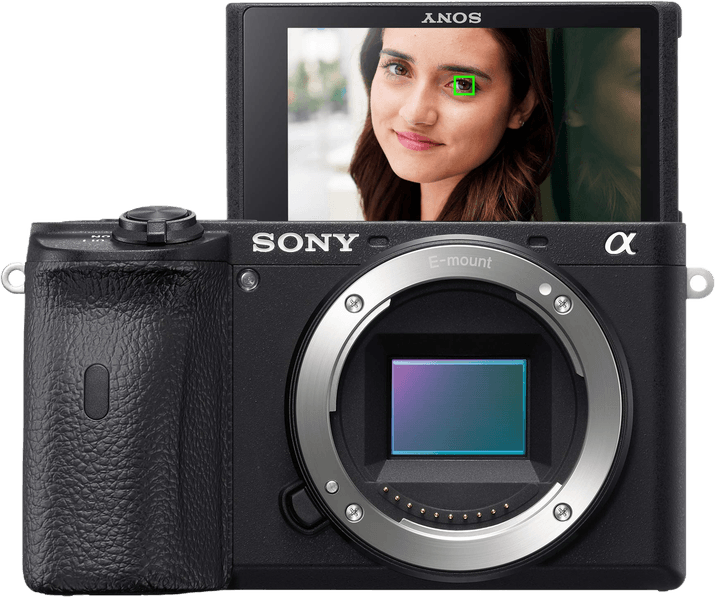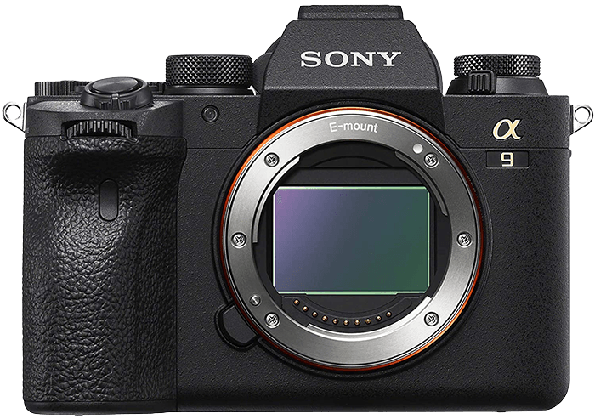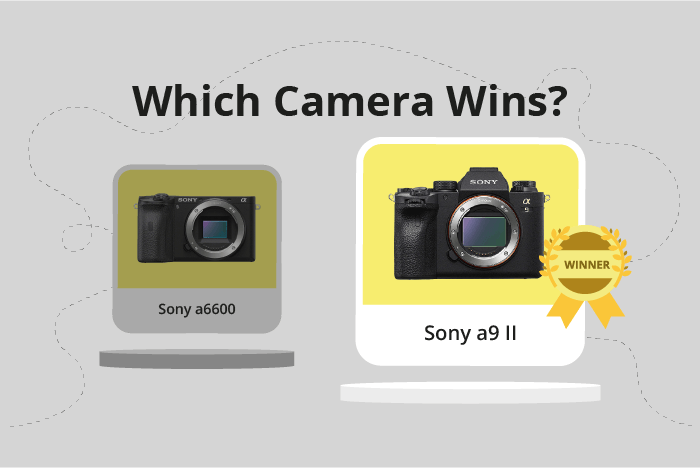Sony a6600 vs a9 II Comparison
Sony a6600

Sony a9 II

The Sony a9 II emerges as the winner with a score of 82/100, outperforming the Sony a6600, which scored 75/100. Both cameras share similarities as mirrorless models, released in 2019. The a9 II excels with its larger size (129 x 96 x 76mm) and heavier weight (678g / 1.49lbs), providing a more robust feel and professional experience. On the other hand, the a6600 has its advantages, being more compact (120 x 67 x 69mm) and lighter (503g / 1.11lbs), making it easier to carry around.
Considering the price, the a6600 is a more budget-friendly option at $1200, while the a9 II is significantly pricier at $4500. Despite the cost difference, the a9 II’s higher score reflects its superior performance and features. The a6600, however, still offers great value for its price.
Sony a6600 vs a9 II Overview and Optics
The Sony a9 II takes the lead in optics with a score of 82/100, while the Sony a6600 trails behind with a score of 76/100. Both cameras share several specifications, such as 24.2 megapixels, CMOS sensor type, Bionz X processor, and image stabilization. They also both utilize the Sony lens mount, with the a6600 using the E mount and the a9 II using the FE mount.
The Sony a9 II excels with its higher DXOMARK sensor score of 93, compared to the a6600’s 82. This difference results in better image quality and low-light performance. Additionally, the a9 II boasts a full-frame sensor size, which provides a wider field of view and improved dynamic range. Its shooting speed of 20 frames per second also surpasses the a6600’s 11 frames per second, making it an ideal choice for action and sports photography.
On the other hand, the Sony a6600 has its own advantages, such as the smaller APS-C sensor size. This feature makes the camera more compact and lightweight, which could be beneficial for travel and casual photography. However, the a6600’s lower DXOMARK score and shooting speed may limit its versatility in more demanding situations.
Taking these factors into account, the Sony a9 II is the clear winner in terms of optics, offering superior image quality, low-light performance, and faster shooting speed. The Sony a6600, while more compact and lightweight, does not match the a9 II’s capabilities in these areas. Therefore, photographers seeking the best optical performance should opt for the Sony a9 II, while those prioritizing portability may find the Sony a6600 more suitable.
Sony a6600 vs a9 II Video Performance
The Sony a6600 is the superior camera for video capabilities, scoring 91/100 compared to the Sony a9 II’s score of 70/100. Both cameras share common specifications, including 4K maximum video resolution and 3840 x 2160 maximum video dimensions. Additionally, both cameras have built-in time-lapse functionality.
The Sony a6600 outperforms the Sony a9 II in terms of video capabilities due to its higher maximum video frame rate. The a6600 can capture video at 100fps, while the a9 II can only capture at 30fps. This difference allows the a6600 to produce smoother videos, especially when capturing fast-moving subjects or creating slow-motion footage.
While the Sony a9 II may not have a higher video frame rate, it still offers solid video performance. The 4K video resolution and built-in time-lapse functionality provide versatility for various video projects. However, the a6600’s superior frame rate sets it apart from the a9 II in this comparison.
The Sony a6600’s higher video score is a direct result of its better video capabilities, specifically the higher maximum video frame rate. This feature provides smoother video footage and greater flexibility for video creators. Although the Sony a9 II has a lower score, it still offers quality video performance with its 4K resolution and time-lapse functionality. Ultimately, the Sony a6600 is the better choice for those prioritizing video capabilities.
Sony a6600 vs a9 II Features and Benefits
The Sony a9 II emerges as the winner in the features comparison, scoring 83/100, while the Sony a6600 trails closely with a score of 81/100. Both cameras share several common specifications, including a 3-inch screen size, touchscreen capabilities, flip screen, GPS absence, and the presence of WIFI and Bluetooth connectivity.
The Sony a9 II takes the lead primarily due to its superior screen resolution, boasting 1,440,000 dots compared to the Sony a6600’s 921,600 dots. This higher resolution results in a crisper and more detailed display, enhancing the user’s experience while composing shots and reviewing images.
However, the Sony a6600 is not without its advantages. It shares many of the same features as the Sony a9 II, making it a competitive option in the market. Its score of 81/100 indicates that it is a strong contender and would still satisfy the needs of many photographers.
In comparing these two cameras, it is evident that the Sony a9 II has a slight edge over the Sony a6600 in terms of features, particularly with its higher screen resolution. Nevertheless, the Sony a6600 remains a reliable and capable camera, offering many of the same benefits as its counterpart. Ultimately, the choice between these two cameras will depend on the individual photographer’s priorities and preferences. While the Sony a9 II may be the winner in this comparison, the Sony a6600’s strong feature set ensures that it remains a worthwhile consideration for those seeking a high-quality camera.
Sony a6600 vs a9 II Storage and Battery
The Sony a9 II triumphs over the Sony a6600 in storage and battery with a score of 79/100, leaving the latter with a score of 48/100. Both cameras accept SD/SDHC/SDXC memory cards and feature USB charging. They also share the same battery type, NP-FZ100.
The a9 II excels with its dual memory card slots, allowing for more storage capacity and flexibility. Additionally, its memory cards are UHS-II compatible, ensuring faster data transfer rates. Despite these advantages, the a9 II falls short in battery life, offering 690 shots compared to the a6600’s 810 shots.
While the Sony a6600 may lack in storage options, its longer battery life may appeal to users who prioritize shooting time over storage capacity. Ultimately, the Sony a9 II offers superior storage capabilities for users seeking ample storage and fast data transfer, while the Sony a6600 provides a longer battery life for extended shooting sessions.
Alternatives to the Sony a6600 and a9 II
Are you still undecided about which camera is right for you? Have a look at these popular comparisons that feature the Sony a6600 or the Sony a9 II:

